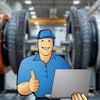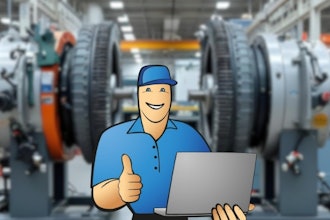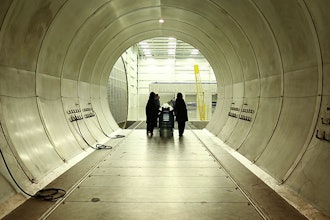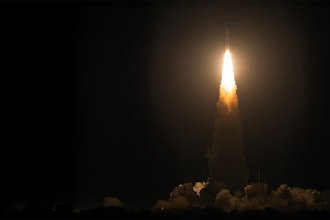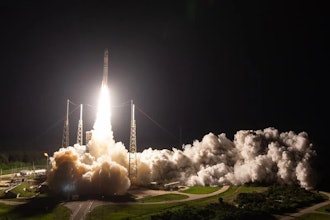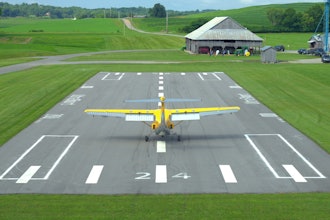Artificial Skin Can Be Twisted, Tickled & Pinched
When we've covered artificial skin in the past, the one thing that we've neglected: can you tickle it? Right? What fun is a robot if it can't kick in at the tickle party? So, researchers at the University of Bristol have created an interactive artificial skin.
The Skin-On interface is a multi-layer silicone membrane that mimics the layers in human skin. The skin consists of a surface textured layer, an electrode layer with conductive threads, and a hypodermis layer. It allows devices to feel your grasp, including tickling, caressing — even twisting and pinching. And that caption is on this photo with a robot being tickled, caressed, twisted and pinched.
Now, I know that they also created a phone case and computer touchpad as part of the tech demonstration, but we all know where this is headed, right? Extremely realistic shaved cat robots.
I understand why you might miss the story — most of the pictures just look like someone let their kid run wild at the lab with a tub of silly putty.
The university, which with collaborated with Telecomm ParisTech and Sorbonne University, also released a sizzle reel of various pinching, touching, tapping and otherwise fondling. You know, to control your phone.
Next, the researchers are working on making the skin more realistic, including embedding hair and giving it goose bumps.
Dr. Anne Roudaut, associate professor in human-computer interaction at the University of Bristol, supervised the research. One of the authors of the paper — Skin-on interfaces: a bio-driven approach for artificial skin design to cover interactive devices — said, “This work explores the intersection between man and machine." Yep, I'd say you nailed it.
Bulletproof Foam Builds a Better Airplane Wing
Back in June, we watched as Composite Metal Foam (CMF) stopped armor-piercing bullets. Researchers fired a .50-caliber armor-piercing round 514 meters per second at the foam, and it bounced off.
Now, researchers from North Carolina State University have a new, slightly less volatile application for the foam. Using a combination of CMF and epoxy resin, the team believes that they could revolutionize aircraft wing design. And really, anything that uses aluminum.
The hybrid material is called "infused CMF." When we saw the bullet-bouncing foam, it was made up of hollow spheres of steel and titanium embedded into steel, aluminum or other alloys. The hybrid uses stainless steel spheres and a stainless steel matrix. However, they immerse the material in a hydrophobic epoxy resin and use vacuum forces to draw resin into the hollow spheres and pores in the matrix. After the process, about 88 percent of the CMF's pores are filled with resin.
What I found most interesting was how they tested it. In order to stand up to aerospace-grade aluminum, they needed to see how quickly water streams off it, how well it stands up to erosion, and how well bug parts stick to it. Really.
In all tests, the infused CMF performed better than aluminum — even the bug test, which not only tests the maximum height of bug residue that builds up on the material, but the total area covered in bug guts as well.
It could help cut costs on future aircraft design by improving performance while cutting the all-important weight and improving fuel efficiency. And it's better on bugs.
Aerospace Engineers Assemble
NASA's Artemis program wants to put Americans back on the moon by 2024. But the program has had its share of problems. The $20 billion to $30 billion price tag has ruffled some feathers, not just on overall cost, but who will land the contracts and how they will be used.
The program has some aggressive goals, including building an outpost on the moon and mining for resources. It has also been considered that Artemis would be the precursor for a mission to Mars.
This week, Artemis took one step closer to becoming a reality as Blue Origin announced a national team that will build the Human Landing System that will be used to reach the moon, and it's a supergroup. Like the Avengers, as long as they were all aerospace engineers.
Blue Origin signed agreements with Lockheed Martin, Northrop Grumman and Draper. Each company has experience working with NASA and has expertise in elements crucial to the program's success.
Draper will lead descent guidance and provide flight avionics. Northrop Grumman will build the Transfer Element vehicle that brings the landing system towards the moon. Lockheed Martin is heading up the the reusable Ascent Element vehicle and leads crewed flight operations and training. And Blue Origin, the prime contractor, will lead program management, systems engineering, safety and mission assurance, and mission engineering while also providing the Descent Element that is based on the multi-year development of the Blue Moon lunar lander.
According to Blue Origin, "It’s time to go back to the Moon, this time to stay."
